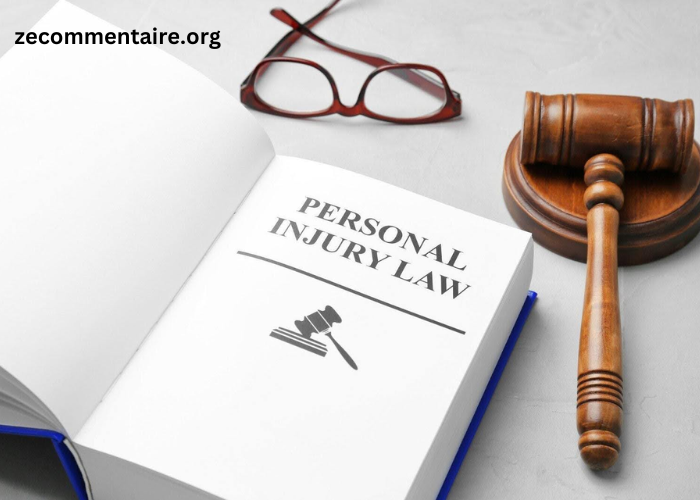Dealing with a legal dispute can feel overwhelming. Especially, when you’re trying to get compensation for injuries caused by someone else’s mistake. But, understanding how a personal injury lawsuit works can help ease your worries and get you ready for the process ahead.
In this article, we’ll guide you through each key step of a personal injury lawsuit process. Know exactly what to expect and feel more confident in taking action.
Initial Consultation
The personal injury lawsuit process begins with an initial consultation between the person who was injured and a personal injury lawyer. This meeting usually takes a few days to a week.
During this time, the lawyer will go over the details of the accident and review any evidence. They will decide if there is a strong enough case to move forward with a lawsuit.
This is an important step because it helps the lawyer and the injured person understand whether the case has merit. If you’re unsure or need expert legal help, you can visit https://stevedimopoulos.com/ for more information and guidance on how to proceed.
Investigation and Filing the Claim
After deciding to pursue a claim, the personal injury lawyer will start investigating the accident. This can take a few weeks to a couple of months, depending on the case.
The lawyer will collect important details. This can include medical records, accident reports, and witness statements. They may also reach out to experts or gather other evidence to support the claim.
Once enough information is gathered, the lawyer will file a formal complaint, also called a petition, to officially start the lawsuit. This step is key to building a strong case and ensuring everything is in place before moving forward.
Discovery Phase
The discovery phase is when both sides in a personal injury lawsuit exchange information to help build their cases. This phase can last anywhere from six months to a year.
It can even be longer sometimes depending on how complicated the case is. During discovery, each side may send written questions (called interrogatories), ask for important documents, and conduct depositions, where witnesses or the parties involved are questioned under oath.
This is one of the longest parts of the lawsuit because both sides need time to gather and review all the necessary details. It’s a crucial step, as it helps ensure that both sides have all the facts before moving forward with the case.
Pre-Trial Motions
Before a trial begins, both sides in a personal injury case may file motions to resolve legal issues. These motions can take a few months to process.
For example, one side might file a motion to dismiss the case entirely. They might argue that there isn’t enough evidence to move forward.
Another common motion is to exclude certain pieces of evidence that may not be relevant or that could unfairly influence the case. These motions can sometimes lead to a settlement.
This is where both parties agree on compensation without going to trial. In other cases, the judge may rule on the motions. This could even cause the case to be dropped if one side’s arguments are strong enough.
Lawsuit Settlement Negotiations
During the pre-trial phase of a personal injury case, both sides will try to settle. This can take anywhere from a few weeks to several months, depending on how complicated the case is.
One way to settle is through mediation. This is where an unbiased third party helps both sides discuss and agree on a fair amount of compensation.
In other cases, the lawyers may negotiate directly with each other to find a solution. If both parties agree to a settlement, the case is over, and the injured person gets the compensation they deserve.
However, if no agreement is reached, the case will move forward to trial. A judge or jury will decide the outcome.
Trial
If the case goes to trial, it can last anywhere from a few days to several weeks, depending on how complex the case is. Both sides will have the chance to present evidence, call witnesses, and make arguments in front of a judge or jury.
The length of the trial can vary based on how many witnesses need to be called, how much evidence is presented, and how complicated the legal issues are. In some cases, trials are shorter.
But, in others, they can take longer because more details need to be worked through. Ultimately, the goal is for both sides to present their best case, allowing the judge or jury to make an informed decision.
Verdict and Appeal
After the trial, the judge or jury will decide the outcome and issue a verdict. If the injured person wins, the court will determine the amount of compensation they should receive.
However, if either side disagrees with the verdict, they can file an appeal. An appeal is when one side asks a higher court to review the case, which can take a long time to resolve.
The appeal process can add several months or even years to the timeline, depending on the complexity of the case and the courts involved. This step may delay the final payment or settlement but is an option for those who feel the decision was unfair.
Payment
Once the verdict is final, the at-fault party is required to pay the compensation. If the case was settled out of court, the payment usually happens fairly quickly, as both sides have already agreed on the amount.
But, if the case went to trial and the injured person won, it might take longer for the payment to be processed. This is because the court needs time to finalize the details and ensure everything is in order.
Depending on the situation, it can take a few weeks to a few months for the compensation to be paid out. In some cases, if the defendant does not pay promptly, the injured party may need to take further steps to enforce the judgment.
Prepare for Your Personal Injury Lawsuit Process with this Guide
A personal injury lawsuit process can be overwhelming, but understanding the steps involved can make it easier. Knowing what to expect helps you stay prepared. Having a lawyer guide you through the process ensures your needs are met.
By working with your attorney, you can improve your chances of getting the compensation you deserve. If you’re facing a personal injury case, seek legal advice to stay informed and ready.
Is this article helpful? Keep reading our blog for more.





